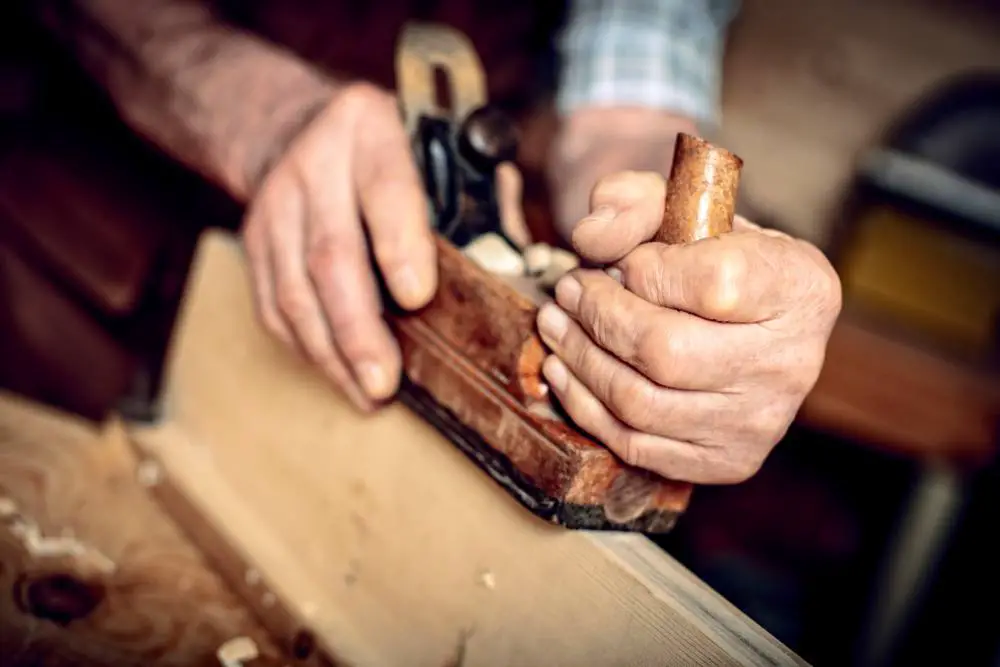A hand planer shaves off thin wood shavings from a piece of wood to create a smooth, flat surface. Knowing how a hand planer work is an essential skill for any woodworker. Here’s a step by step guide to help beginners:
Tips for Using Hand Planers
Choose the Ideal Hand Plane
There are different hand planers, each performing a different task. Planers with long bodies straighten the wood more accurately as the length of the frame allows the plane to bridge the troughs and peaks on the surface. Shorter planes, on the other hand, are ideal for more precise woodworking tasks.
When choosing a hand planer, ensure that it matches the task at hand. Jointer planes, for example, are ideal for straightening or trimming long pieces of wood as they are longer (usually 22 inches). Smoothing planes are more versatile hence suitable for most woodworking projects.
Inspect the Blade for Sharpness
The blade should be razor-sharp to ensure it removes the wood shavings accurately. You may use 220-grit sandpaper or a bench grinder to sharpen the blade. Be sure to hold the blade at a 30-degree angle, so the bevel sits flat against the sandpaper. The blade should form a burr at its back when it is ready for use.
Adjust the Angle of the Blade
The angle of the blade determines the thickness of the shavings. If the angle is too deep, you may shave off too much wood from the surface. When adjusting the blade angle, turn the adjustment wheel until the tip of the blade protrudes beneath the sole of the plane. If you are a beginner, you can start with a shallow angle and increase the depth as you familiarize yourself with the tool.
Clamp the Work Material
Be sure to clamp the workpiece to prevent it from moving when pressure is applied. For example, if planning the side of a door, position the door on its side and clamp it to a secure surface, e.g., a wall or a table leg.
Planing the Wood Surface
Place the plane at the edge of the surface and begin to flatten and smoothen the wood. Apply pressure on the front knob and press it forward while pushing the plane across the surface in a smooth, continuous motion. Work the surface methodically, paying attention to the high sections on the surface. You also want to:
- Avoid Cutting too Deep: The chip should be levered and bent out of the way as it slides out of the throat of the plane. If the cut is deep, you may have applied lots of pressure on the surface, causing the wood fibers to separate. A split forms in front of the blade as a result
- Plane with the grain sloping upwards: This causes a split to enter the surface you are planning. Also, the shaving is deeper and likely to widen the split
- Avoid choking: It happens when some shavings get stuck in the mouth firmly. To avoid this, ensure the mouth of the plane is adjusted accordingly. A wide mouth is suitable when planning wood to the correct size quickly, while a narrow mouth is excellent for smooth wood if the width of the shaving is fine. Also, check the position of the blade in line with the leading edge of the mouth
- Include a chip breaker: Shavings that ride up the surface of a single plane (blades with no chip breakers) have more leverage that helps initiate a split in front of the cutting edge. A chip breaker folds the shavings before it has gained too much leverage helping a well-set plane cope with delicate grain
Inspect the surface for accuracy
You should have a flat, smooth surface sitting flush with adjacent pieces of wood. Check for the smoothness by laying a straight edge along the surface.
It should sit flush against the face of the wood regardless of its position. If it leaves gaps underneath, then some sections of the wood have high spots. Also, use a try square to check the angle between two adjacent faces of the wood to ensure it sits at a ninety-degree angle.
Additional Tips
- Avoid planning across the grain
- Plane in the direction the wood grain is rising
- Clamp a block of wood on the side of the cross-grain. This way when the plane reaches a cross-grain section, it tears the wood, not the work material

